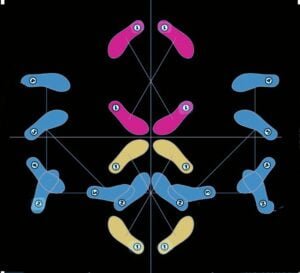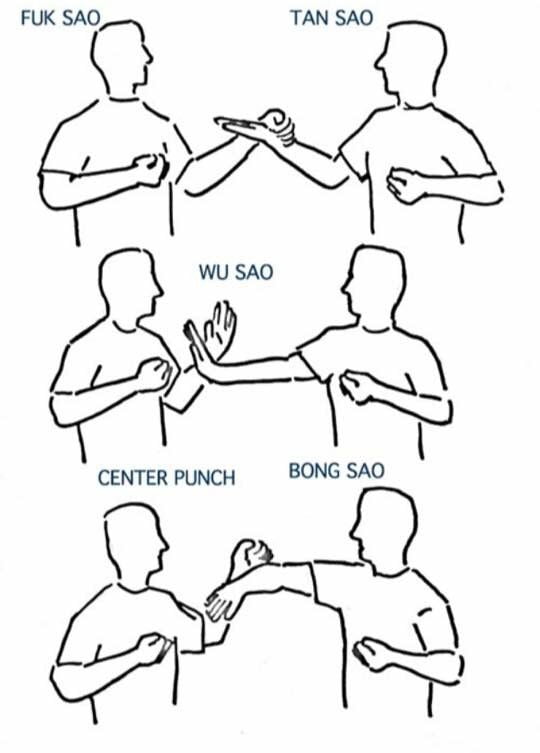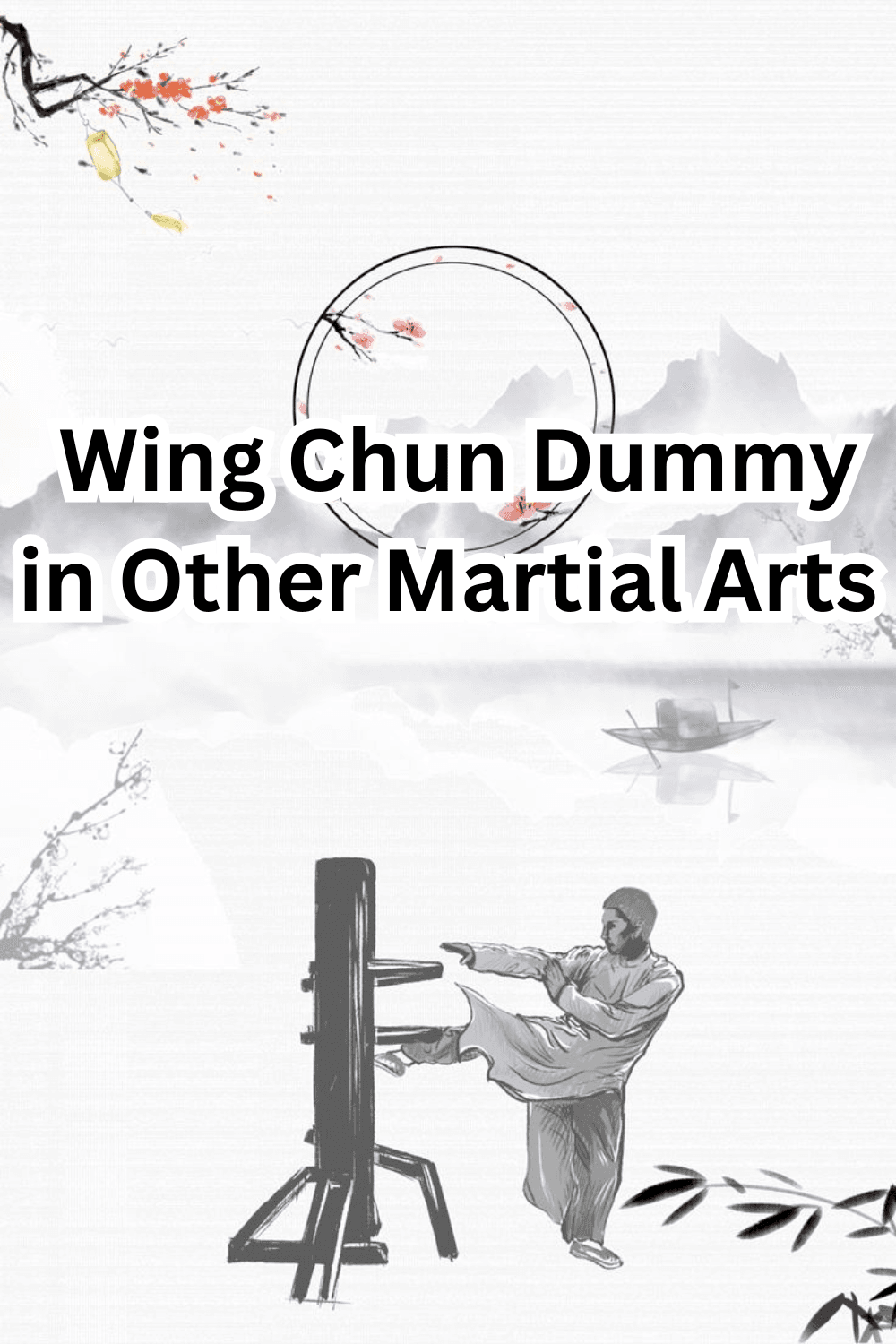Wing Chun is a renowned traditional Chinese martial art that emphasizes efficiency, directness, and practical self-defense, (Self-defense beginners Wing Chun).
Originating in Southern China, Wing Chun was developed during the Qing Dynasty and is attributed to the legendary Shaolin nun, Ng Mui.
Its creation aimed to be a simplified and effective combat system, focusing on speed, precision, and economy of movement.
Unlike many other martial arts that rely heavily on brute strength, Wing Chun’s core philosophy revolves around using an opponent’s force against them.
This makes it particularly suitable for individuals of all sizes and strengths, offering an effective means of self-defense without the need for excessive physical power.

The art prioritizes quick, close-range combat techniques, which are designed to neutralize threats swiftly and efficiently.
One of the distinguishing features of Wing Chun is its emphasis on centerline theory.
This principle involves protecting the central axis of the body while simultaneously attacking an opponent’s centerline.
This dual functionality ensures that practitioners can defend themselves while launching counterattacks, maintaining a balanced approach to combat.
Furthermore, the practice of Chi Sao, or “sticky hands,” hones sensitivity and reflexes, enabling practitioners to react instinctively to an opponent’s movements.
In the realm of modern self-defense, Wing Chun remains highly relevant.
Its practical techniques are designed for real-world scenarios, making it an ideal choice for beginners seeking an effective means of personal protection.
The martial art’s focus on simplicity and directness allows new practitioners to acquire useful skills relatively quickly compared to more complex systems.
Additionally, the mental discipline and strategic thinking fostered by Wing Chun contribute to heightened situational awareness and better decision-making under pressure.
Overall, Wing Chun’s unique blend of practicality and philosophy makes it a valuable addition to the repertoire of anyone interested in self-defense, particularly those new to martial arts.
By learning the fundamental principles and techniques of Wing Chun, beginners can develop a robust foundation for personal safety and confidence.
The Centerline Theory
The Centerline Theory is a foundational principle in Wing Chun, pivotal for both defense and offense.
This theory underscores the importance of maintaining control over an imaginary vertical line that runs down the middle of your body, from the top of your head to the ground.

By focusing on this centerline, practitioners can effectively defend against attacks and simultaneously create opportunities for counter-attacks.
In Wing Chun, the centerline is regarded as the most direct path between you and your opponent.
Dominating this line allows a practitioner to control the flow of combat.
When you maintain a strong central position, you are better equip to intercept incoming strikes, protect vital areas, and deliver powerful counters.
This approach minimizes unnecessary movements and maximizes efficiency.
One of the fundamental techniques in applying the Centerline Theory is the straight punch, known as the “chain punch” in Wing Chun.
This technique is executed along the centerline, ensuring that each punch travels the shortest distance to the target.
Additionally, defending along this line involves using blocks and parries that keep the hands close to the body.
Providing a quicker response to an adversary’s attacks.
Moreover, controlling the centerline neutralizes an opponent’s moves by disrupting their balance and limiting their options.
When you dominate the centerline, you force your opponent to attack from the outside, which is less effective and more predictable.
This strategic advantage allows you to preemptively counter their moves with precision and speed.
Self-defense for beginners in Wing Chun, visual aids or diagrams can be invaluable in understanding the Centerline Theory.
These tools can illustrate how the centerline is maintained during various techniques and highlight the importance of this concept in real-time scenarios.
Mastery of the centerline is essential for anyone looking to develop a solid foundation in Wing Chun.
Providing a strategic edge in both defensive and offensive maneuvers.
Basic Stance and Footwork

One of the foundational elements in Wing Chun is the basic stance known as Yee Jee Kim Yeung Ma.
This stance is critical for maintaining balance, stability, and mobility — key components in effective self-defense.
To execute this stance, you start by standing with your feet shoulder-width apart.
Your toes should point slightly inward, creating a triangular shape between your legs.
Bend your knees slightly, and sink your weight evenly between both legs.
The spine should remain straight, and the pelvis slightly tucked in to maintain a strong, centered posture.
Proper footwork in Wing Chun is equally essential.
The primary technique used is the “Yee Ma” or the “pivoting stance.”
This maneuver allows you to turn your body efficiently while maintaining balance and stability.
Begin by positioning yourself in the Yee Jee Kim Yeung Ma stance.
To pivot, shift your weight to one leg while turning your hips and the opposite leg in the desired direction.
This action should feel smooth and controlled, with your upper body remaining relaxed and centered.
Effective footwork ensures that you can quickly adjust your position in response to an opponent’s movements.
Making you a more elusive and reactive target.
Practice shifting from one leg to the other and pivoting in various directions to enhance your agility.
Over time, these movements will become second nature.
Allowing you to maintain composure and control during self-defense situations.
For beginners, it is recommended to practice these stances and footwork drills regularly.
Start by dedicating a few minutes each day to standing in the Yee Jee Kim Yeung Ma stance, focusing on your balance and posture.
Gradually incorporate pivoting exercises, increasing speed and complexity as you become more comfortable.
Consistent practice will build a strong foundation, enabling you to execute more advanced techniques with greater precision and confidence.
Finally, it’s highly recommend for Self-defense beginners in Wing Chun.
Defensive Techniques: Blocks and Parries
Understanding and mastering defensive techniques are essential components of Wing Chun, particularly for beginners.
These techniques not only help in deflecting or neutralizing an opponent’s attack but also in maintaining a balanced stance and creating opportunities for counter-attacks.
Three fundamental defensive maneuvers in Wing Chun are Tan Sau (palm up block), Bong Sau (wing arm block), and Fook Sau (controlling hand).
The Tan Sau, or palm up block, is a cornerstone of Wing Chun defense.
This technique involves raising the forearm with the palm facing upward to intercept and deflect an incoming attack.
The movement should be fluid, utilizing the body’s natural mechanics to redirect the force rather than meeting it head-on.
Practicing the Tan Sau regularly helps in developing reflexes and precision, making it an effective tool for close-quarter engagements.
Bong Sau, or wing arm block, is another critical defensive maneuver.

It is executed by raising the arm to shoulder height with the elbow pointing outward, resembling a wing.
This technique is particularly useful for deflecting high and mid-level strikes, allowing the practitioner to absorb and redirect the opponent’s energy.
The Bong Sau requires a proper understanding of angles and timing.
Which can be honed through consistent practice and partner drills.
Fook Sau, or controlling hand, differs slightly as it focuses on maintaining contact with the opponent’s limb to control their movements.
This technique involves positioning the hand in a relaxed, curved shape and using it to sense and manipulate the opponent’s intentions.
Fook Sau is integral to the concept of “sticking hands” (Chi Sau) in Wing Chun, where practitioners engage in a continuous flow of movements to develop sensitivity and responsiveness.
To effectively practice these defensive techniques, beginners can engage in drills such as the single-hand Chi Sau and partnered blocking exercises.
These drills not only enhance muscle memory and coordination but also build the essential tactile sensitivity required for advanced Wing Chun defense.
Consistent practice and mindful repetition of Tan Sau, Bong Sau.
And Fook Sau will significantly improve one’s ability to react swiftly and effectively in real-world self-defense scenarios.
Must practice daily this tactics Self-defense beginners in Wing Chun
Striking Techniques: Punches and Kicks
Wing Chun, a traditional Chinese martial art, emphasizes efficiency and directness in its striking techniques.
One of the fundamental strikes in Wing Chun is the straight punch, commonly known as Chun Kuen.
This punch is characterized by its direct path.

Aiming to strike the opponent with maximum efficiency while conserving energy.
The mechanics behind the Chun Kuen involve a linear motion where the fist travels straight from the practitioner’s centerline to the target.
ensuring minimal telegraphing and maximum impact.
Proper form and alignment are crucial when executing the straight punch.
The punch begins with a relaxed fist positioned at the practitioner’s centerline, with the elbow kept close to the body.
As the punch extends, the fist rotates, with the knuckles aligned horizontally upon impact.
This rotation adds torque, enhancing the force behind the strike.
Additionally, maintaining a relaxed, yet firm, posture allows for fluidity and speed, essential components in Wing Chun’s striking philosophy.
In addition to punches, Wing Chun incorporates a variety of kicks to complement its hand techniques.
Basic kicks in Wing Chun include the front kick and the side kick.
The front kick, executed from a neutral stance.
Involves lifting the knee and extending the leg in a straight line, targeting the opponent’s midsection or lower body.
Self-defense beginners Wing Chun
The side kick, on the other hand, is performed by pivoting on the supporting foot and extending the leg sideways.
Aiming for the opponent’s knee or torso.
To deliver these kicks with maximum efficiency.
Practitioners must focus on balance and alignment.
The supporting leg should be firmly planted, and the kicking leg must extend smoothly.
With the foot’s heel or edge making contact with the target.
Practicing these kicks regularly, along with the straight punch, helps develop muscle memory.
Ensuring that the techniques can be executed swiftly and accurately in a real-world scenario.
Overall, mastering the fundamental striking techniques of Wing Chun.
Such as the straight punch and basic kicks, requires diligent practice and an understanding of the mechanics behind each move.
By focusing on proper form, alignment, and regular training.
Beginners can build a strong foundation in self-defense, enabling them to protect themselves effectively.
Chi Sau: Sensitivity Training
Chi Sau, also known as ‘sticky hands,’ is a distinctive component of Wing Chun that emphasizes the development of sensitivity to an opponent’s movements.
This practice is integral for beginners, as it instills the ability to respond instinctively to physical contact, a crucial skill in self-defense scenarios.
The primary purpose of Chi Sau is to train a practitioner’s reflexes.
Allowing them to detect and react to subtle changes in pressure and direction from an opponent.
The benefits of Chi Sau extend beyond mere physical reflexes.
It cultivates a heightened sense of awareness and promotes a deeper understanding of body mechanics and positioning.
Practitioners learn to maintain a relaxed but alert state, a balance that is vital in any form of self-defense.
This sensitivity training enables a Wing Chun student to anticipate an opponent’s actions and counter them effectively, often before a full attack is launched.
Basic drills in Chi Sau begin with simple hand movements that emphasize maintaining constant contact with a partner’s arms.
One foundational exercise is the single-hand Chi Sau.
Where each partner uses one hand to engage in a series of control movements, feeling for openings and applying pressure to test their partner’s reactions.
This drill teaches the principle of ‘listening’ with one’s hands, fostering an intuitive understanding of an opponent’s intentions.
As practitioners progress, they move on to double-hand Chi Sau.
Which involves both hands and introduces more complexity.
This stage incorporates simultaneous attack and defense, teaching students to manage multiple forces and angles of attack.
Additional exercises include rolling hands, which help in maintaining fluidity and adaptability in movement, critical for real-life self-defense situations.
In summary, Chi Sau is a cornerstone of Wing Chun that offers beginners essential skills in sensitivity and reflexive response.
By engaging in regular Chi Sau practice, practitioners develop an intuitive grasp of physical interactions, enhancing their overall self-defense capabilities.
Practical Self-Defense Scenarios
Wing Chun’s practicality shines through in various self-defense scenarios.
Making it a valuable martial art for beginners.
The techniques can be effectively applied in real-world situations to protect oneself against different types of threats.
This section will delve into common scenarios and how Wing Chun tactics can be employee for self-defense.
One of the most frequent situations is defending against grabs.
Wing Chun emphasizes close-quarters combat.
Making it ideal for countering grabs.
When facing a wrist grab, the practitioner can use a combination of the “Lop Sau” (grabbing hand) technique to control the attacker’s arm, followed by a quick counter-strike such as a “chain punch” to incapacitate them.
This approach not only neutralizes the threat but also allows for a swift and decisive response.
Another common scenario involves defending against strikes.
Wing Chun’s “Tan Sau” (palm-up hand) and “Bong Sau” (wing arm) techniques are particularly effective here.
When an attacker throws a punch, the defender can use “Tan Sau” to deflect the strike and simultaneously close the distance.
This can be followed by a series of rapid “chain punches” to overwhelm the attacker.
The focus on simultaneous defense and offense is a hallmark of Wing Chun, providing a balanced approach to self-defense.
Situational awareness is crucial when dealing with multiple attackers.
Wing Chun’s principles of economy of movement and efficiency are especially beneficial in such scenarios.
By maintaining a strong, balanced stance and using “Chi Sau” (sticking hands) to feel and control the movements of the attackers.
A practitioner can effectively manage multiple threats.
Quick decision-making and the ability to adapt to changing circumstances are essential in these high-pressure situations.
Understanding and implementing Wing Chun techniques in these practical scenarios enhance a beginner’s ability to defend themselves effectively.
With consistent practice and a keen awareness of one’s surroundings.
The principles of Wing Chun can serve as a robust foundation for personal safety.
Training Tips and Resources for Beginners
Embarking on your Wing Chun journey requires a balanced approach.
Combining practical training with theoretical understanding.
To train effectively in Wing Chun, the first step is to find a qualified instructor who can guide you through the foundational techniques.
Look for an instructor with verifiable credentials and positive reviews from students.
Attending a few trial classes can help you gauge the teaching style and ensure it aligns with your learning preferences.
Once you have found a suitable instructor, setting up a consistent training regimen is crucial.
Beginners should aim for regular practice sessions, ideally integrating both solo and partner drills.
Start with basic stances, hand techniques, and forms, such as Siu Nim Tao, to build a strong foundation.
Gradually incorporate more complex movements and applications as your skill level improves.
Consistency is key; even short, daily practice sessions can lead to significant progress over time.
In addition to in-person training, utilizing online resources can be highly beneficial.
Numerous websites, video tutorials, and forums are dedicates to Wing Chun, offering a wealth of knowledge at your fingertips.
Platforms like YouTube feature instructional videos from reputable martial artists.
Providing visual aids that can complement your training.
Online courses and virtual training sessions can also serve as supplementary resources.
Especially if access to a local instructor is limiting as with any new endeavor.
Beginners in Wing Chun may face challenges such as physical limitations.
Frustration with complex techniques, or plateaus in progress.
Address these obstacles by maintaining a positive mindset and focusing on incremental improvements.

Seek feedback from your instructor and peers.
And don’t hesitate to revisit fundamental techniques to strengthen your skills.
Persistence is essential; continuous learning and adaptation will ultimately lead to mastery.
By combining expert guidance, disciplined practice, and leveraging digital resources.
beginners can effectively navigate their Wing Chun training journey.
Remember, the path to proficiency in Wing Chun is a marathon.
It’s not a sprint; dedication and patience are the ultimate keys to success.
Share your thoughts about – Self-defense beginners Wing Chun.



